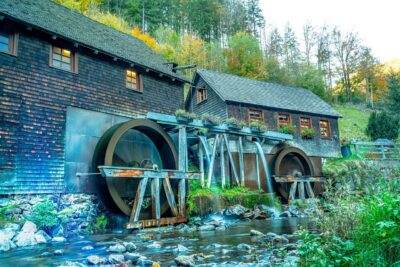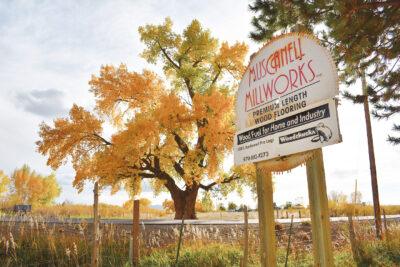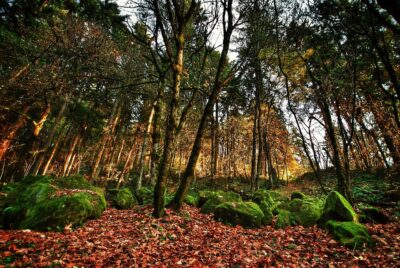Private ownership represents about 56 percent of the country’s total forest land and
25 percent are forests measuring less than 50 acres
United States forests are among the most proactively managed woodlands in the world. Federal forest management began in 1876 when Congress created the first office to assess the quality and condition of U.S. forests. In 1905, management was transferred to the United States Department of Agriculture Forest Service (USDAFS), with a defined mission to sustain the health, diversity, and productivity of the nation’s forests and grasslands to meet the needs of present and future generations.
This mission is accomplished through five main activities:
1.Protecting and managing natural resources on U.S. forest lands.
2.Conducting research on forest lands to improve efficiencies.
3.Providing assistance with forest management on private lands.
4.Educating the public about our nation’s forests.
5.Developing policies to support global forest management.
Protecting/Managing
The primary activity of the USDAFS is to protect and manage the country’s national forests, which cover more than 190 million acres in 44 states, Puerto Rico, and the U.S. Virgin Islands.
One of the major challenges to protecting and managing national forests is fire prevention. Annually, the USDAFS responds to more than 50,000 fires. Changes in forest management practices during the past few decades have resulted in decreased harvesting in national forests, resulting in increased undergrowth, a larger density of trees, and an accumulation of dead wood on the forest floor. These conditions, combined with drought in many areas of the country, create the perfect conditions for large fires. The fires threaten natural resources, private property, and public safety, while diverting national funds from conservation efforts to fighting fires. In 2009, of the $5.5 billion budgeted for national forests, 42 percent of those funds were used to fight out-of-control forest fires. Fortunately, fire policies are changing as the USDAFS recognizes that controlled fires have a role in promoting a healthy ecosystem.
Research
The USDAFS’s research division is tasked with improving the health and use of national forests. This is accomplished by conducting forest inventories that measure the volume, condition, and vigor of more than 1.5 million trees.
This research shows that standing inventory of U.S. forests has grown for the past 70 years, increasing by 188 percent. Today, inventories are more than double what they were in 1953, and growth is two times higher than removals.
Forest Management Assistance
The USDAFS State and Private Forestry program provides technical and financial assistance to private land owners, state agencies, tribes, and community resource managers. Assistance includes programs to prevent fires, insect infestations, disease, and invasive plant species.
The vast majority of private forest lands in the U.S. are located in the Eastern part of the United States. This area of the country is dominated by Hardwood species. Private ownership represents about 56 percent of the country’s total forest land, and 25 percent are forests measuring less than 50 acres. About 42 percent of private forests are owned by individuals and/or families, representing more than 10 million individual forest owners.
During the past few decades, changes in harvesting practices on federal lands have had an impact on private forest harvesting practices. As harvesting declined on public lands, harvesting increased on private lands to keep up with demand. Annually, about 11 million acres of timber are harvested, with selective harvesting dominating management practices.
Education
The USDAFS has launched several public service campaigns to educate Americans about forestry and ecology. Past efforts include Smokey the Bear, the television show Lassie, and Woodsy Owl. School children also were taught that trees take in carbon dioxide from the atmosphere and produce oxygen. Today, efforts are made to teach that products made from U.S. forests continue to sequester carbon during their service lives.
Global Forest Management
Although most of the USDAFS activities are focused on the U.S., its international efforts promote sustainable land management throughout the world. Its two primary objectives include conserving natural resources to support local communities and conserving ecosystems worldwide.
Conserving natural resources internationally is accomplished in a variety of ways. While the U.S. does not control conservation laws in other countries, it does work to control demand for products grown and harvested in other areas of the world, especially in regions where illegal logging is a problem.
Conserving ecosystems is also a concern. With the advent of easy and affordable travel throughout the world, and the expansion of global trade, there is a significant risk of introducing invasive species into other ecosystems. These invasive species bring with them the risk of destroying entire species of native trees, which the USDAFS is working to prevent.
Looking Forward
Today, about one-third of the U.S. is covered by forests, of which about nine percent is federal forest land. This equates to about 747 million acres, which ranks fourth world-wide, behind the Russian Federation, Brazil, and Canada.
Since 1990, increased demands for recreation areas, and conservation efforts, have led to a decrease in overall harvest rates from federal lands by more than 60 percent. As a result, these national forest lands only produce about nine percent of the total U.S. timber harvest.
Fortunately, about two million acres of forests are planted each year in the U.S., which equates to a standing inventory of about 230 billion trees. By continuing to monitor the health of U.S. forests through the USDAFS, we can be assured that the raw materials we all depend on are available for many, many generations to come.
The National Wood Flooring Association has detailed information about forest management practices available through NWFA University, an online training platform that is convenient and affordable. More information is available at nwfa.org/nwfa-university.aspx.








